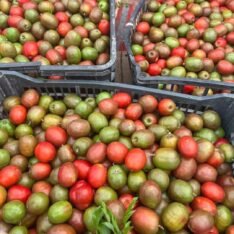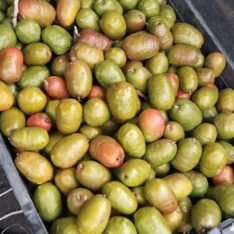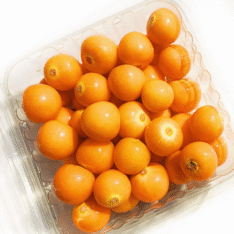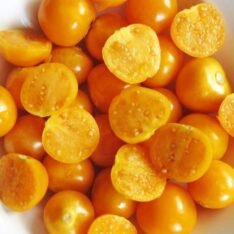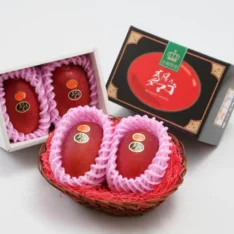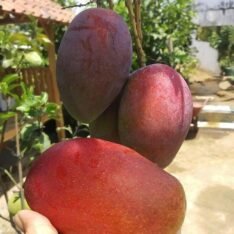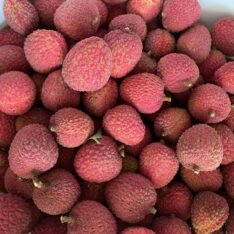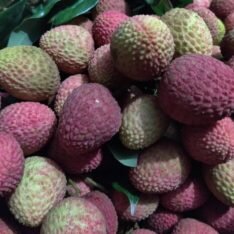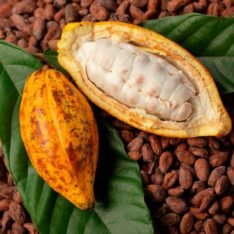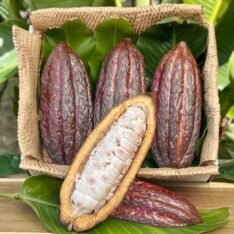The Ultimate Guide to Cherimoya: Nature’s Tropical Custard Apple Fruit Box
Imagine biting into a fruit so luxuriously creamy that it tastes like a blend of banana, pineapple, and vanilla custard, with no added sugar. Try the Cherimoya Fruit Box, a tropical gem that’s captivated foodies and health enthusiasts alike. Often called the “ice cream fruit,” this exotic superstar is more than just a sweet treat. Let’s unravel its secrets!
What Exactly Is Cherimoya?
Cherimoya (Annona cherimola) is a green, heart-shaped fruit with a bumpy, reptilian-like skin. Inside, its snow-white flesh hides glossy black seeds. Native to the Andes, it’s part of the Annonaceae family, alongside soursop and sugar apple. Unlike its cousins, cherimoya boasts a uniquely smooth texture and delicate sweetness—no acidity or tang. Fun fact: Mark Twain once dubbed it “the most delicious fruit known to men.”
History of Cherimoya Fruit: From Andes to Global Fame
Cherimoya’s story begins in Ecuador, Peru, and Colombia, where it’s grown for over 1,000 years. Spanish conquistadors introduced it to Europe in the 16th century, and it later reached Asia and California. Today, it thrives in Mediterranean climates like Spain (where 80% of Europe’s supply grows) and California’s coast.
Despite its ancient roots, cherimoya remains a niche luxury—only recently gaining U.S. traction through specialty farms like Polito Family Farms in California.
Cherimoya Fruit Review: Taste, Texture & Uses
Taste & Texture: Ripe cherimoya is buttery soft, with floral-sweet notes reminiscent of bubblegum, coconut, and papaya. Unlike gritty sugar apples or tart soursop, its melt-in-your-mouth consistency feels decadent.
How to Eat: Slice vertically, spoon out the flesh (discard toxic seeds!), and enjoy raw. Use in:
-
Smoothies (replaces bananas)
-
Chilled desserts (sorbets, mousses)
-
Savory salads (pairs with lime, chili, mint)
Key Comparisons: Cherimoya vs. Atis Sugar Appples
How does the cherimoya compare to Atis fruits? Here’s a clear breakdown:
Appearance
-
Atis:
-
Smaller in size (roughly the size of a tennis ball)
-
Segmented, scale-like outer skin that turns yellow-green when ripe
-
More rugged, lumpy texture
-
-
Cherimoya:
-
Larger, often heart-shaped
-
Smoother green skin with overlapping, fingerprint-like patterns
-
More refined appearance
-
Taste Profile
-
Atis (Sugar Apple Fruit Box):
-
Sweet and grainy
-
Notes of vanilla custard with a slightly tropical edge
-
More sugary and slightly less creamy than cherimoya
-
Often eaten by scooping with a spoon or hand-separating segments
-
-
Cherimoya:
-
Smooth, rich, and custard-like flavor
-
Blend of banana, pineapple, papaya, and strawberry
-
Creamier and more balanced in sweetness
-
Regarded as the more gourmet or premium-tasting option
-
Insight: Cherimoya’s low acidity makes it uniquely versatile for sweet and savory dishes, while soursop’s tang suits beverages. Nutritionally, all three are fiber-rich, but cherimoya leads in vitamin C (25% DV per cup) and potassium.
Health Benefits of Cherimoya Fruit
Science backs this fruit’s superfood status:
-
Heart Health: High potassium levels help regulate blood pressure (American Heart Association).
-
Immunity Boost: One cup provides 60% of the daily value of vitamin C.
-
Brain Function: Vitamin B6 supports the synthesis of neurotransmitters (NIH Study).
-
Antioxidant Powerhouse: Contains flavonoids like catechin, linked to reduced inflammation (Journal of Agricultural Food Chemistry).
Caution: Seeds contain neurotoxic annonacin—never consume!
Order Cherimoya Fruit Box Near Me USA
Finding fresh cherimoya stateside? It’s possible!
-
Online Retailers:
-
Exotic Fruit Box (seasonal shipments nationwide).
-
FruitStand (partner California-sourced boxes).
-
-
Locally, check Whole Foods or farmers’ markets in California and Florida during peak season.
Pro Tip: Order slightly unripe fruit; it ripens at room temperature in 2–3 days.
Some Famous Cherimoya Recipes
-
Cherimoya Coconut Smoothie Bowl
Blend 1 cherimoya (seeded), ½ cup coconut milk, 1 frozen banana. Top with toasted coconut flakes and chia seeds. -
Peruvian Cherimoya Sorbet
Puree flesh with lime juice & honey. Freeze 4 hours—no churn needed! (Authentic Recipe Inspiration). -
Cherimoya & Shrimp Ceviche
Toss cooked shrimp, cherimoya cubes, red onion, cilantro, and lime juice. Serve chilled.
FAQ About Cherimoya Fruit
Q1: Can I grow cherimoya at home?
A: Yes! In USDA zones 9–11. Dwarf varieties (e.g., ‘Booth’) thrive in pots.
Q2: Is cherimoya keto-friendly?
A: Moderately—10g net carbs per 100g. Enjoy sparingly.
Q3: Why does my cherimoya turn brown quickly?
A: It oxidizes like an apple. Sprinkle lime juice to preserve color.
Q4: Are cherimoya and custard apple the same?
A: Often confused! Custard apple (Annona reticulata) has rougher skin and grainier flesh. Cherimoya is smoother and sweeter.
Q5: How to store ripe cherimoya?
A: Refrigerate in a paper bag for 2–3 days max.
The Future of Cherimoya
As demand for exotic superfoods surges, Annona cherimola’s appeal grows. Farmers in Hawaii and Puerto Rico are experimenting with organic strains, while food innovators use its pulp in dairy-free ice creams. Yet, its delicate nature (perishability, hand-pollination needs) keeps it a premium treasure.
Final Thought About our Shop Experience
Testing our Cherimoya Fruit Box isn’t just a fruit, it’s an experience. Whether scooped straight from the rind or blended into a tropical masterpiece, it offers a rare harmony of flavor, nutrition, and indulgence. Ready to taste paradise? Your cherimoya adventure awaits!
Additional Information
| QUANTITY | 1 Pound, 5 Pounds Box, 10 Pounds Box, 25 Pounds Box |
|---|





